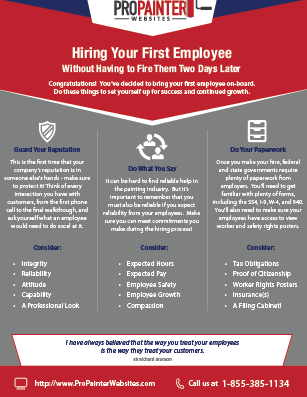Check Out The Duty Of Seasonal Factors In The Success Of Commercial Exterior Paint And Reveal The Best Times To Secure Lasting Results For Your Project
Check Out The Duty Of Seasonal Factors In The Success Of Commercial Exterior Paint And Reveal The Best Times To Secure Lasting Results For Your Project
Blog Article
Web Content By-Doherty Celik
When you're intending a commercial outside painting project, seasonal elements can make or damage your results. You'll want to consider just how temperature level and moisture influence paint application and drying times. Selecting the best season can ensure your paint sticks appropriately and lasts longer. Yet which seasons are truly the very best for this kind of job? Let's check out the key elements that can affect your task's success.
The Influence of Temperature on Paint Application
When you're planning a business exterior painting project, the temperature level can considerably influence just how well the paint sticks and dries.
Ideally, you want to repaint when temperatures range between 50 ° F and 85 ° F. If it's also cold, the paint might not treat properly, resulting in problems like peeling or splitting.
On the other hand, if it's also warm, the paint can dry also promptly, protecting against proper adhesion and resulting in an uneven finish.
You should also consider the moment of day; morning or late afternoon uses cooler temperatures, which can be extra positive.
Always check the maker's suggestions for the particular paint you're making use of, as they usually give assistance on the ideal temperature level range for optimal results.
Humidity and Its Impact on Drying Times
Temperature level isn't the only ecological element that affects your commercial outside paint project; humidity plays a substantial role as well. High humidity degrees can decrease drying out times substantially, influencing the overall high quality of your paint task.
When the air is filled with wetness, the paint takes longer to treat, which can result in problems like inadequate adhesion and a greater threat of mildew development. If you're repainting on a particularly humid day, be planned for extensive delay times in between coats.
It's vital to keep track of regional climate condition and strategy as necessary. Ideally, go for moisture levels in between 40% and 70% for optimal drying out.
Keeping these consider mind ensures your job stays on track and supplies a long-term surface.
Best Seasons for Commercial Outside Paint Projects
What's the very best time of year for your business exterior painting projects?
please click the up coming post and very early fall are typically your best choices. During these periods, temperature levels are moderate, and moisture degrees are usually reduced, creating optimal problems for paint application and drying out.
Avoid a knockout post , which can create paint to completely dry also swiftly, resulting in inadequate adhesion and surface. Similarly, winter months's cool temperature levels can impede correct drying and healing, risking the durability of your paint task.
Go for days with temperature levels in between 50 ° F and 85 ° F for ideal outcomes. Bear in mind to examine the regional weather report for rain, as wet problems can destroy your job.
Preparation around these variables guarantees your paint project runs efficiently and lasts longer.
Final thought
Finally, planning your industrial external painting jobs around seasonal considerations can make a substantial distinction in the outcome. By scheduling work during the ideal temperature levels and moisture levels, you'll ensure better attachment and drying out times. Bear in mind to keep an eye on neighborhood weather report and select the correct time of year-- springtime and very early fall are your best choices. Taking these steps will certainly aid you attain a long lasting and specialist finish that lasts.
